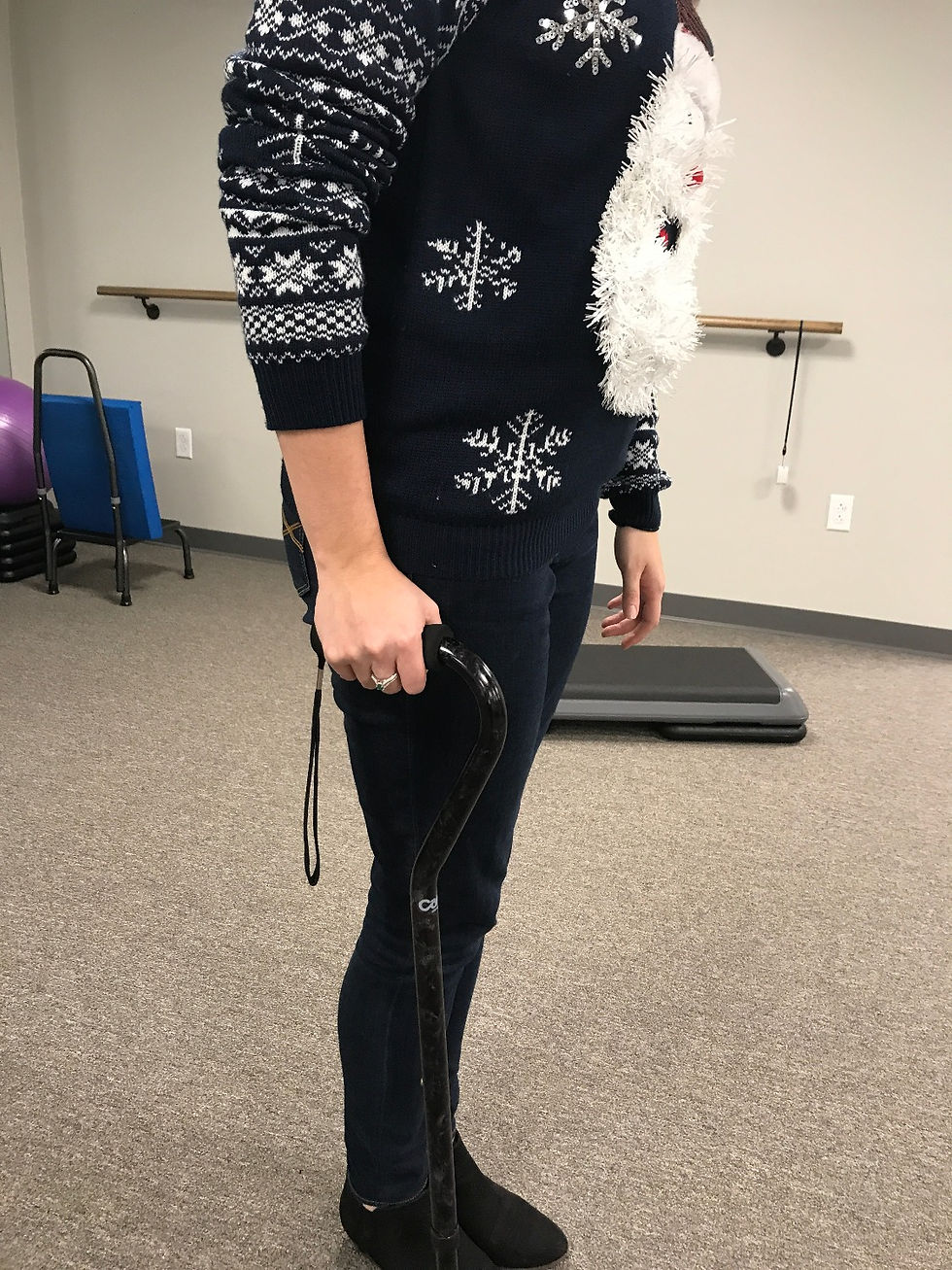Have a Cane? Use it Correctly!
- Amber Hayes, DPT
- Dec 24, 2017
- 3 min read
Have you ever gotten hurt and been told to use an assistive device, like a cane or crutches? I'm sure you have. But, the true question is did you receive proper instruction? I bet not....
This is a problem. Using an assistive device improperly may actually increase your risk of falling, or cause increased stress on the leg you are trying to support.
Today I want to quickly review How to correctly use a cane
I want people to be safe, and this is a step in the right direction (corny pun, I know.)
Anyway, here is where you should start:
Properly measuring your cane
One size does not fit all. An initial key for safety is making sure your cane is the proper height. Most canes are adjustable, and here is how to appropriately measure:
1.) Stand with your shoes on, with your arms gently resting at your sides
2.) The handle of the cane should rest at the crease of the wrist
3.) When holding the handle, the elbow should be slightly bent
If adjusted correctly the cane should be about half of your height.
Because I like visuals I have provided some pictures (and they are even festive for the holiday!)


Tips for holding cane properly
For an injury, you will hold the cane on your good side. That is right, NOT on the same side as the injured leg.
For use as a balance aid for general mobility, using the cane on your dominant side is recommended.
Walking with a cane
Start by holding the cane on the opposite side of your "bad" leg
Step with the "bad" leg, bringing the cane forward at the same time. This allows you to weight bear through your good arm to "support" the bad leg
The good leg can either "step-to" the level of the bad leg (so that the feet are even), or "step-through" the bad leg, so the good leg ends up ahead. The first of these two ways is used for a person who requires more stability
You should not feel like the cane is too far ahead of you. It should only move as much as the distance of your step
I always tell my patients, should you feel off balance, or not in control....STOP, REGROUP, & START OVER. When your walking pattern is incorrect your fall risk typically increases.
Again, pictures are helpful. Pictured below is a "good" right leg and a "bad" left leg
Here is a "step-to" pattern. (Used when more stability is required.)



Here is a "step-through" pattern. (Used when stability has improved and you are safer with a normal walking speed.)



And, look at this! Videos are below as well!
"Step-to" use of cane
"Step-through" use of cane
How to go up steps with a cane
"Good" goes to heaven, "bad" goes to ...... (I'll let you fill in the blank)
When going up stairs, always lead with the "good" leg. Then bring the "bad" leg up, followed closely by the cane.


When going down the stairs, always lead with the cane first, then the "bad" leg, followed by the good leg.
When a hand rail is present, choose to hold on to it.



These steps can also be utilized when ascending/descending a curb.
It is a goal of ours to educate our patients and the community as much as possible. If you continue to have questions feel free to contact us! Stay tuned for demonstrations on crutch and walker use!
































Comments